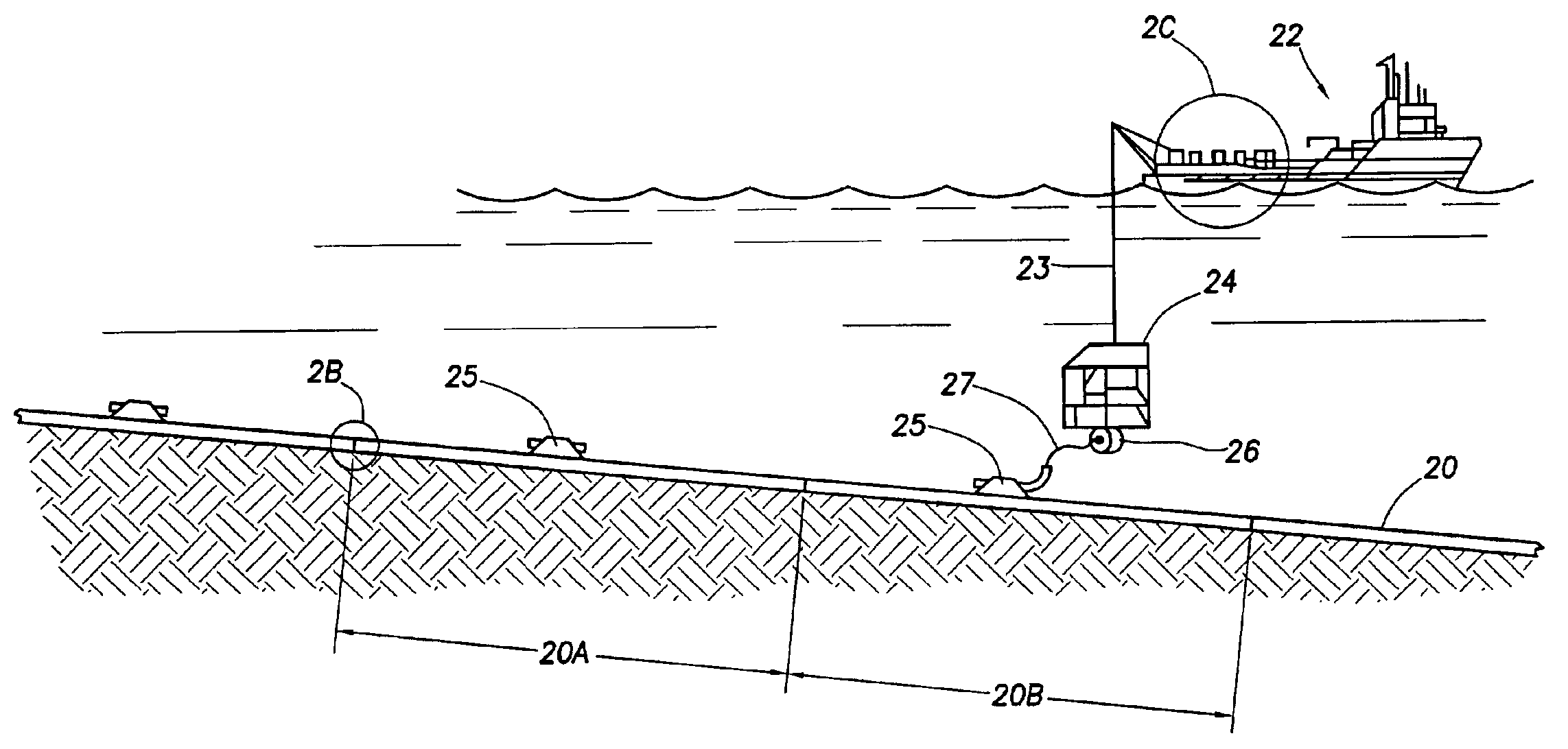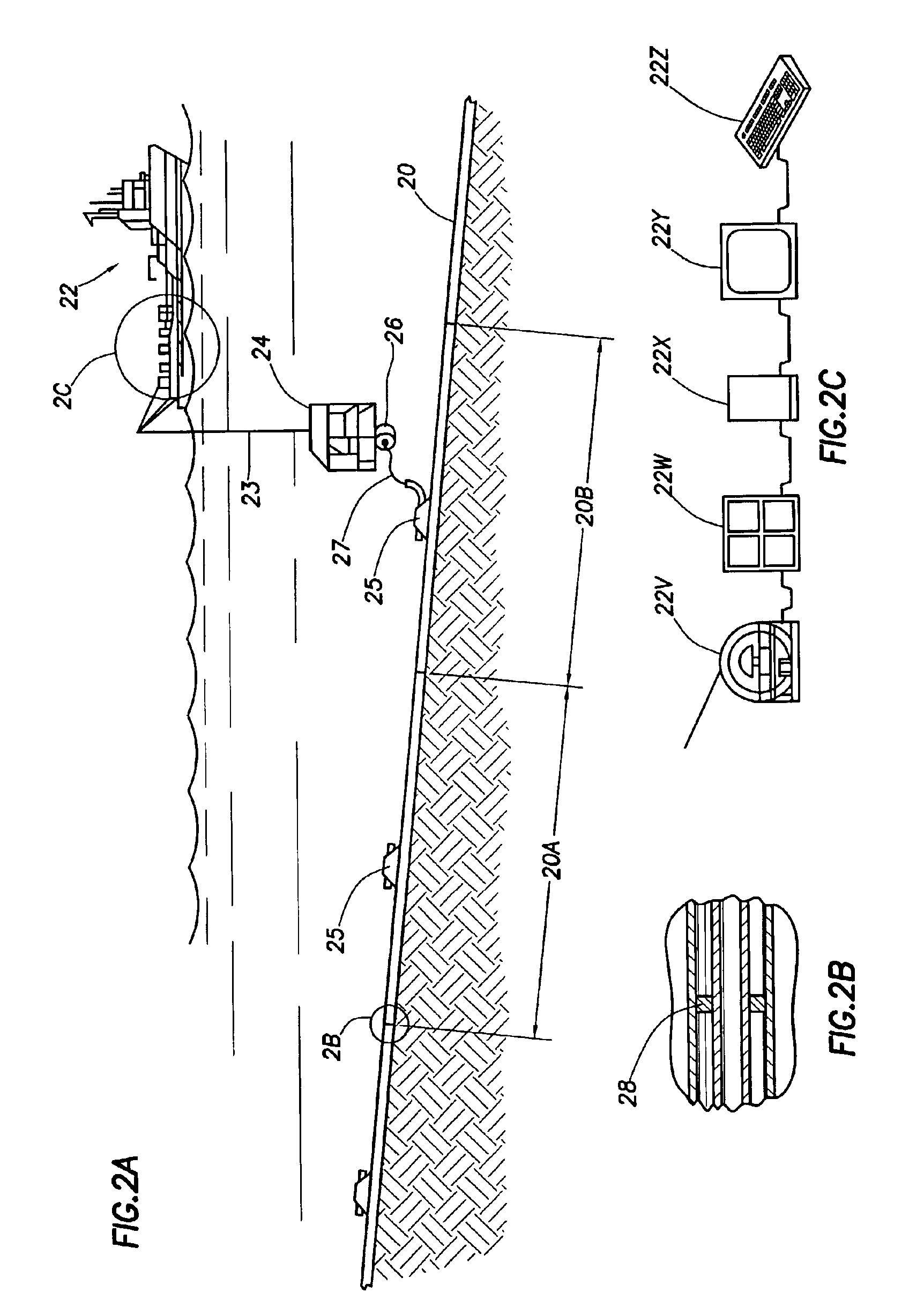Testing electrical integrity of electrically heated subsea pipelines
a technology of electrical integrity and subsea pipelines, which is applied in the direction of pipe heating/cooling, instruments, mechanical equipment, etc., can solve the problems of difficult removal, severe viscosity increase of some crude oils, and ineffective deep water hydrate removal methods that work in shallow waters
- Summary
- Abstract
- Description
- Claims
- Application Information
AI Technical Summary
Problems solved by technology
Method used
Image
Examples
Embodiment Construction
[0022]FIG. 1 illustrates subsea equipment in an oil or gas field with subsea wells producing to an offshore platform. Wellheads 10 of producing wells are connected to a segment 11 of a pipeline or flowline. Each segment 11 is terminated at each end at sled 12, where a bulkhead is present between the inner and outer pipe. Approximately mid-way along each segment 11 is Mid-Line Electrical Connector (MLEC) 14, which is described below. Segments of a pipeline join and transport fluid from wellheads 10 to platform 15. Control lines 16 from platform 15 are connected to controllers 17 for each well. Fluids from platform 15 are transported to shore or other facilities through oil export line 18 and gas export line 19.
[0023]FIG. 2A illustrates a configuration of the present invention directed to subsea pipe-in-pipe pipeline 20 having segments 20A and 20B. Ship 22 has been moved in place to lower ROV 24 on umbilical 23 to the proximity of mid-line electrical connector (MLEC) 25. Canister 26, ...
PUM
 Login to View More
Login to View More Abstract
Description
Claims
Application Information
 Login to View More
Login to View More - R&D
- Intellectual Property
- Life Sciences
- Materials
- Tech Scout
- Unparalleled Data Quality
- Higher Quality Content
- 60% Fewer Hallucinations
Browse by: Latest US Patents, China's latest patents, Technical Efficacy Thesaurus, Application Domain, Technology Topic, Popular Technical Reports.
© 2025 PatSnap. All rights reserved.Legal|Privacy policy|Modern Slavery Act Transparency Statement|Sitemap|About US| Contact US: help@patsnap.com



